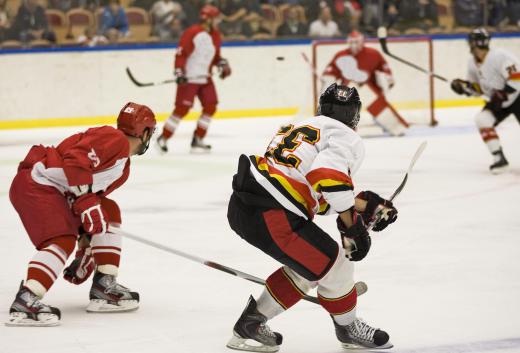Ice hockey is a team sport that involves moving a puck into the other team's goal. Some version of the sport has been played since the 16th century, but the first official indoor games didn't take place until 1875, which is considered the beginning of the modern sport. Some of the most important ice hockey rules include those related to the positions on the team, how the puck can be moved, where the players can be in relation to the puck, and how players can have contact with each other.
Each hockey team consists of six players: a goaltender, two defensemen, and three forwards. Forwards often play together as lines, as do defensemen. When a substitution is made, changes are typically made as a set.

The point of the game is to shoot the puck into the opponent's net to score goals. This is done with a long stick with a curved blade at one end. The puck can also be redirected by using the body, as long as there is no kicking or pushing motion. In 1930, a new ice hockey rule was put into effect, allowing forward passes and making team play vital to the sport.

One key ice hockey rule during games has to do with "icing the puck," the act of shooting the puck across the center red line and over the opposing red goal line. When icing occurs, the play stops and a face-off is held in the defensive zone of the team that committed the infraction.
Offside play is called when a player on the attacking team precedes the puck inside the attacking zone. When an offside violation occurs, a face-off follows. Another, separate ice hockey rule, called an offside pass or a two-line pass, is called when a pass made from inside one team's defending zone goes across the red line. Not all leagues observe the offside pass rule.

In most leagues body contact, including hitting and pushing, are allowed as long as they are part of a full-body move. Stick-on-body contact and hits from behind, however, are typically illegal. A player who is penalized is sent to the penalty box for up to five minutes, depending upon the seriousness of the offense.
